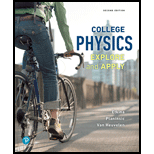
To explain: The reason for the statement that proton decay is restricted inside the nuclei only, not in its free state.
Answer to Problem 1RQ
Solution:
The rest energy of protons is less than the rest energy of neutrons, therefore, proton decay takes place in nuclei only because the nucleus will provide additional energy to overcome this energy barrier.
Explanation of Solution
Introduction:
Beta decay is referred to as the transformation of protons into neutrons and vice-versa. This decay is further categorized into two different types depending upon the formation of these sub-particles.
Beta plus decay: In this decay, a proton is transformed into a neutron along with the formation of a positron and a neutrino.
Beta minus decay: In this decay, a neutron is transformed into a proton along with the formation of an electron and an antineutrino.
Explanation:
A light mass particle cannot convert into a heavy mass particle in a free state, and the mass and energy of a neutron is greater than that of a proton. Therefore, the transformation is not achieved in free state of a proton. This additional mass and energy are either provided by a gamma-ray photon or by the energy of the nucleus.
Since the beta transition takes place in between the isobars (atoms that have the same
The reaction is as follows:
Since the proton itself is not able to decay into another sub-particle that has a greater mass and higher energy, therefore, the binding energy of the electrons that are associated with isobaric atoms supplies the extra energy that is required for the decay process.
Conclusion:
The additional rest energy of neutron is provided by the nucleus during the beta plus decay, therefore, this decay always takes place in nuclei.
Want to see more full solutions like this?
Chapter 30 Solutions
College Physics